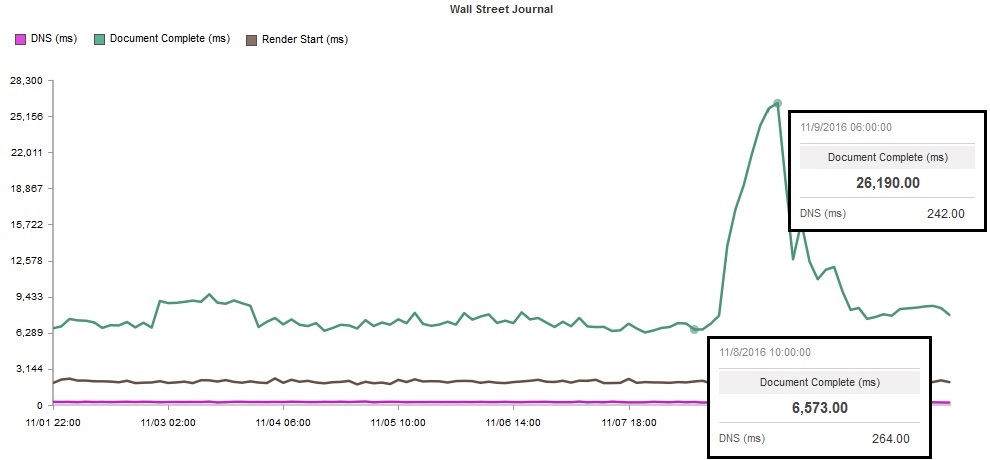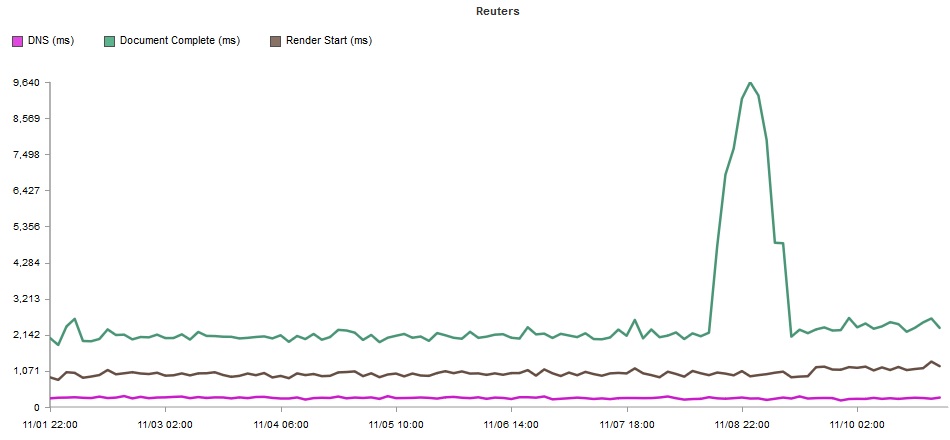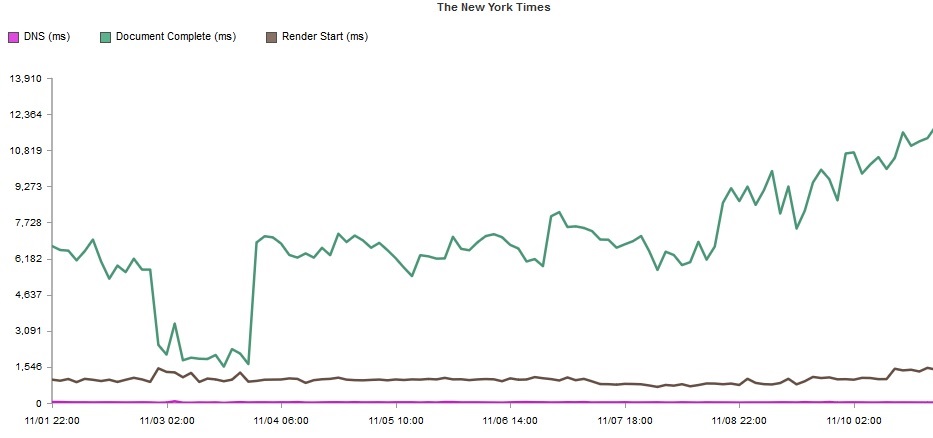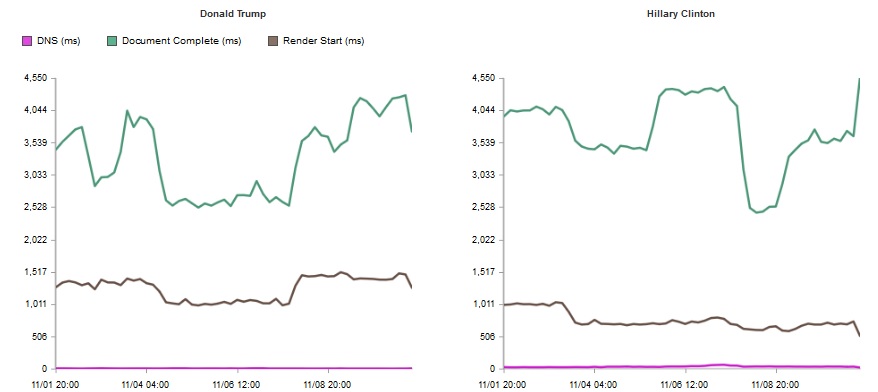The Highs and Lows of the 2016 Election
We've analyzed the performance data during the US Presidential Election. See which news and media site performed the best in this benchmark report.
The marathon of a presidential election has finally come to an end. The online world has played a crucial role in building the campaigns of each candidate – media websites and other social platforms were widely used by both Donald Trump and Hillary Clinton to reach out to their supporters and to help voters decide whom to give their vote to. As the election day drew nearer, we were tracking the website performance of each candidate along with the major media websites. In this article, we analyze how these websites fared this week during the elections.
News and Media
We have been tracking the major news and media sites during the election season. Most of these websites managed to serve updated content during election day without any downtime. The election results were updated in real time on all major media websites; election day concluded with these sites live streaming videos of the victory speech followed by reactions from the US and across the world. There was a huge influx of data around this time as the media tried to add every bit of information to their websites. Let us look at the data Catchpoint has collected over the last couple of days.

Bloomberg, Huffington Post, and USA today maintained uniform performance throughout the week. These websites managed to keep all the performance metrics in check and did not display any drastic changes to the website load time or availability.
There were a couple of interesting dips in performance for a few sites, these included The Wall Street Journal, New York Times, CNN and Reuters. The websites experienced heavy traffic as election day progressed, the document load times were unusually high and it continued to spike on the 8th and 9th of November. This is understandable as there was a huge influx of data right after Super Tuesday.
The downward performance trend continued into the next day – the 10th of November. Public interest around the election results and the transition process had peaked. The meeting between the president-elect Donald Trump and President Obama generated even more traffic on the sites and the media continued to upload fresh and updated content to the websites.
Performance Impact in Numbers
The Wall Street Journal website displayed a gradual spike in page load time on the 8th of November, the performance degraded as election day progressed and the document load time increased from 6.5 seconds to 26 seconds. This was due to an increase in the number of scripts added to the site to display live election results along with new images and third party components. In addition to this –
- The web page size went from 3.23 MB to 6.83 MB.
- The number of requests made by the page doubled from 204 to 485 requests.
Here is a comparison of the data from 7th and 9th Nov. We can see how all the changes on the site reflected in its performance.



Reuters showed a similar spike in load time as well as total downloaded bytes between the 8th and 10th.

The New York Times and CNN displayed high load times throughout election day and continued to inch upwards for the rest of the week. The page was loading several scripts and images to display real-time updates about the election which pushed the Document complete time higher than the industry standard of 2-3 seconds.


Lets move on to the websites of the candidates. These sites averaged below 3.5 MB in size with 100% availability. There were no major outages or downtime on the sites throughout this month; Donald Trump’s website was the faster website with a document complete time of 3.2 seconds.


When we compare the data from 8th Nov, we can see a slight degradation in the performance of the Donald Trump website. The homepage banners were changed to announce the election results and the image added to the page size which in turn added to the document complete time.
On the other hand, The Hillary Clinton website had temporarily removed the video that was on the homepage during election day; this cut down the page size and the document complete time, making the page load faster.
Overall, the media and news sites dedicated a good portion of the website content to cover the election. The performance was uniform across most sites except for a couple of sites that slowed down in the last couple of days.
For the full details of this performance analysis, download our US Election Media benchmark report:


